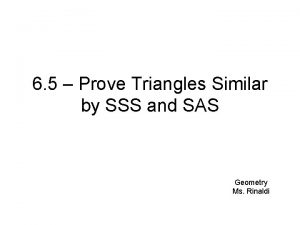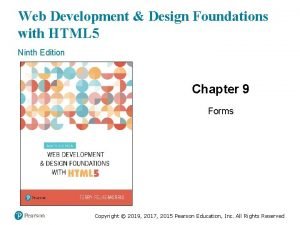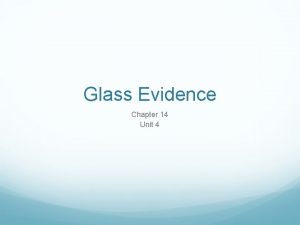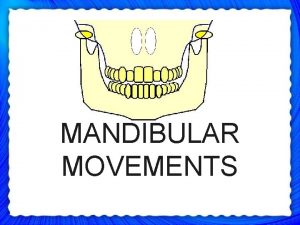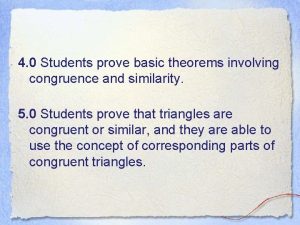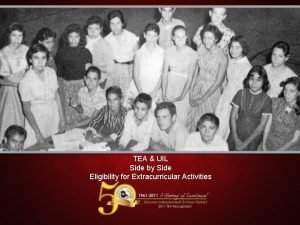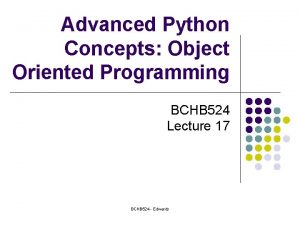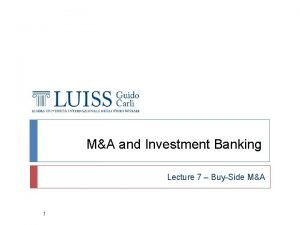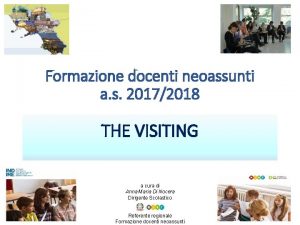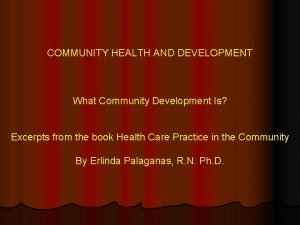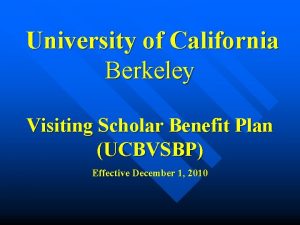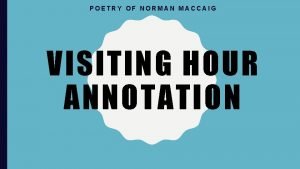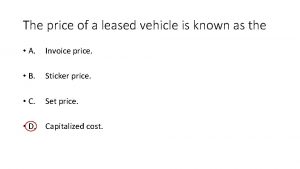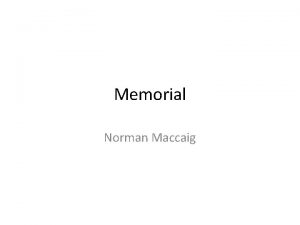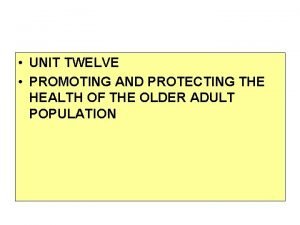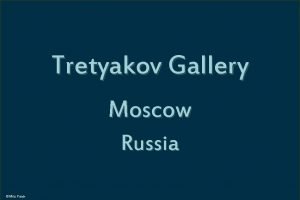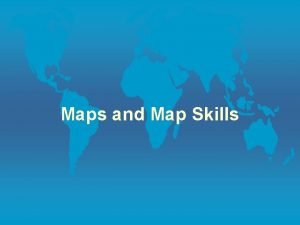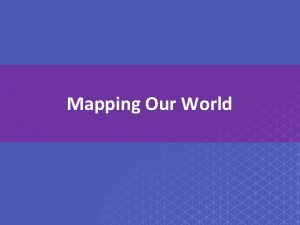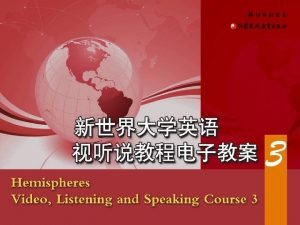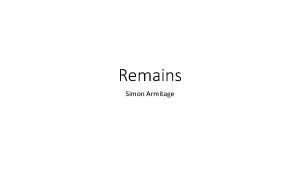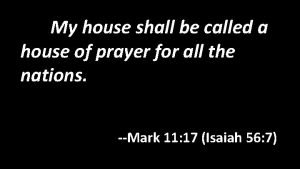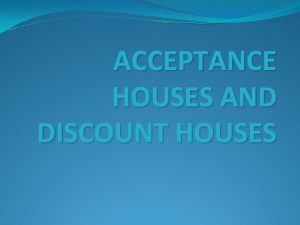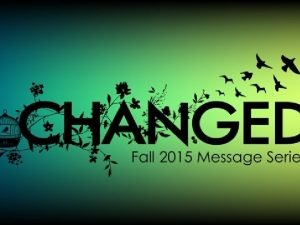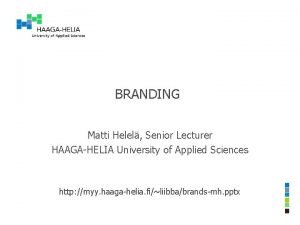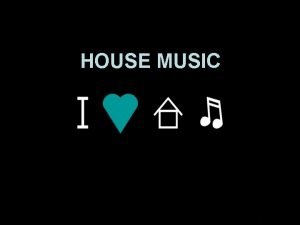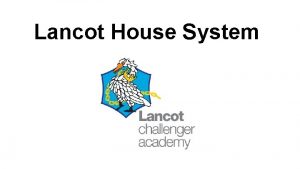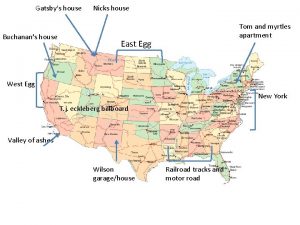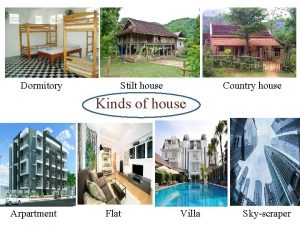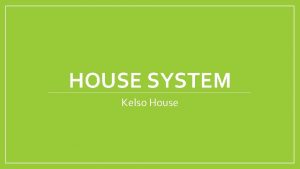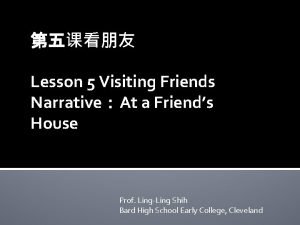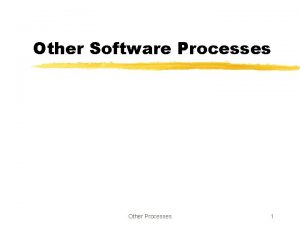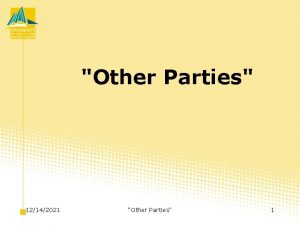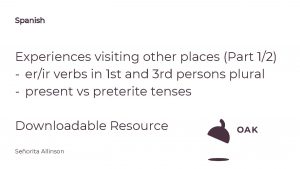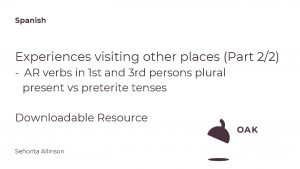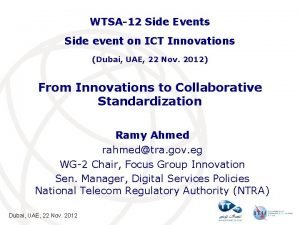Visiting a House on the Other Side of






























































- Slides: 62

Visiting a House on the Other Side of Town Dr. Johnny Lake April 24, 2014 11: 30 am – 12: 45 pm PACIFIC TIME Note: The Power. Point is currently available on the CADRE website: www. directionservice. org/cadre/lakewebinar. cfm Dial in: 1 -877 -512 -6886 ID: 679 683 6031 Technical Stuff: Ø All phone lines are muted – press #6 to unmute your phone during Q&A. Ø Use a phone line for best audio quality. Ø Please enter any questions or technical difficulties into the chat box. Ø Thank you for taking the time to answer the webinar poll questions! (Note: The poll questions will appear on your screen until we remove them)

Visiting a House on the Other Side of Town Dr. Johnny Lake April 24, 2014 Eugene, OR 2

What Does A Person Deserve? • The health and well-being of our community is a shared responsibility. • As we work to create a fair and equitable community, we still see consequences of historical and societal problems most vividly displayed in the challenges faced by those already marginalized. • Class, gender, race, poverty, disability and culture often intersect and frame the destiny of many. What does a person deserve? 3

Sense of Safety, Sense of Belonging • The ache for home lives in all of us, the safe place where we can go as we are and not be questioned. Maya Angelou, 1986 • When a child has no sense of how he should fit into the society around him, he is culturally deprived. Ralph Ellison, 1986 • Portes and Rumbaut (2001, 2005) reports a pervasive and positive sense of cultural heritage is unmistakably related to mental health and social well being. 4

The Face of the Agency • The face of an agency is not a website, a building or a business card. For many persons and families the face of your agency is a person, an individual. It may be you. • Without key persons who can connect with diverse clients, agencies will not be able to fulfill their mission to provide effective services for all clients. 5

Emotional Labor • Emotional labor, different from manual or intellectual labor is still very demanding • Requires people to take care of other human beings • Must trade part of yourself to help others • Extensive emotional labor is required to be responsible for directing/motivating others and be responsible for the consequences 6

Theories in Use • Espoused Theories - theories we claim to support, speak about and practice. i. e. , “We value and celebrate diversity. ” • Theories-in-use - existing theories that direct and serve to rationalize and explain our actions. “We make the minimal efforts to support diversity efforts to avoid criticism. ” • We are not always conscious of the incongruence between espoused theories and theories-in-use. When we are we tend to avoid facing it. Argyris & Schon (1974) 7

Learn, Unlearn and Relearn “The illiterate of the 21 st century will not be those who cannot read and write, but those who cannot learn, unlearn, and relearn. ” Alvin Toffler b. 1928 8

Learning • Whatever competence means today, we can be sure its meaning will have changed by tomorrow. • The foundation for future professional competence seems to be the capacity to learn how to learn (Schein, 1972). • When you want to learn as badly as you want to breathe, then and only then will you become wise. Aristotle 9

When Did You Learn? 1. When did you first notice that there were others different than you? 2. What did it feel like for you? 3. Think about a time when you have been treated differently because of your differences. 4. Think about one time when you have treated others differently based on who they were. 10

Stories 11

Stories • The stories we tell ourselves and each other form a foundation, a basis, an explanation, even a justification for the way we see, understand interact with the world around us. • Stories or narratives present/represent a sense of reality, whether false or true. The very nature of our reality is continually shaped and defined by ongoing narratives that are used to explain our perceptions, beliefs and actions. 12

We Learn from the World Around Us • Recent studies on the issue of implicit bias suggest that many of the natural psychological categories that we have learned and that help us sort the world into meaningful information can bring with them negative biases from childhood that are hard to shake, even years after we believe we have removed them from our conscious viewpoint on the world (Dovidio, Kawakami, Smoak, & Gaertner, 2009; Greenwald & Krieger, 2006; Kang, et al. , 2012; Rudman, 3004; Nier, 2005). 13

Images in Our Minds “History acts because it is the basis of the image which is the ground of our acts - for people act out of their image. They respond not to the situation but to the situation transformed by the image they carry in their mind. ” Lerone Bennett 14

Structural and Societal Challenge • There are no genetic differences that can predict or determine the performance or potential of a person. • But powerful cultural and social influences and patterns are closely associated with perceptions that favor the success of some persons over others. • The politics of addressing these issues honestly in a hierarchal society is difficult. • It is important to address the structural forces that are impediments to helping all clients and families. 15

Ordering of Society • Concepts that have proven useful in ordering things easily achieve such authority over us that we forget their earthly origins and accept them as unalterable givens. Albert Einstein • A long habit of not thinking a thing wrong, gives it a superficial appearance of being right. Thomas Paine 16

Sexism, Racism, Classism • How do we learn these beliefs, attitudes and behaviors? • Like a fish in the water. When does a fish know he is not in the water? • If we grow up in a certain context that teaches us sexism, are we aware of it? Racism? Classism? Homophobia? • How do we become aware that we may have been taught a certain bias about the world around us? What do we do? 17

Visiting a House on the Other Side of Town 18

“To a worm in horseradish, the world is horseradish. ” Russian proverb • Context defines our worldview • Context: 814 Pruitt St. Bolivar, Tennessee • Establishes a worldview with a certain already-held bias about how the world looks and the roles people play. • How many people grew up in a place similar to an “ 814 Pruitt St”? 19

Context: Visiting a House on the Other Side of Town • What do you already know about the other side of town? What have you heard? Who do you know who lives there? How often do you go there? • What is the general view of the other side of town? What do the newspapers and television report? What are the expectations of people from there? Do you want to live there? 20

STEREOTYPES 21

Never Make Assumptions 22

Making Assumptions • We know this is true, but we often lose sight of this reality in communicating. We overlook the fact that we all make assumptions and carry certain stereotypes about others. These ideas about others are formed long before we meet them or speak to them. In fact these ideas about others start operating the moment they enter the room. • Define Stereotype. 23

Social Identity Theory (Brewer) • Ingroup and outgroup differentiation o Adaptive categorization Process • Maximum distinctiveness • Associating positive qualities to ingroup and negative qualities to outgroup o Maintains ingroup self-esteem o Not necessarily complementary processes 24

Stereotype • Stereotype - Assumed characteristics on a large group of individuals whose beliefs, habits, and realities often disagree with the imposed image. • American journalist Walter Lippmann coined the metaphor, calling a stereotype a "picture in our heads" saying "Whether right or wrong, . . . imagination is shaped by the pictures seen. . . Consequently, they lead to stereotypes that are hard to shake. " (Public Opinion, 1922, 95 -156). 25

Stereotypes • The subtlest and most pervasive of all influences…create and maintain…stereotypes. • We are told about the world before we see it and we imagine most things before we experience them. • Those preconceptions, unless education has made us acutely aware, govern deeply the whole process of perception. (Lippmann, 1922) 26

4 Steps to Deal with Stereotypes 1. Recognize and admit we all deploy stereotypes 2. Suspend the judgment 3. Engage in legitimate and meaningful interactions with the target of stereotyping 4. Employ the new information to make better, more informed decisions about others 27

Microaggressions • Microaggression - “Everyday insults, indignities and demeaning messages sent to people of color by wellintentioned white people who are unaware of the hidden messages being sent by them. ” D. W. Sue • “In and of itself a microaggression may seem harmless, but the cumulative burden of a lifetime of microaggressions can theoretically contribute to the diminished mortality, augmented morbidity and flattened confidence. ” C. Pierce 28

Culture 29

Culture • What is culture? How did you learn it? • Not static, but in constant flux, or state of change. • Means that to become and remain competent with other cultures, we must learn, unlearn, and relearn continually. • How do you learn about another culture? Take a class? Watch a movie? Travel? • Americans are called “cultural tourists”. 30

Culture Definition • Culture - culture consists of the abstract values, beliefs, and perceptions of the world that lie behind people’s behavior, and which are reflected in their behavior. These are shared by members of a society, and when acted upon, they produce behavior considered acceptable within that society. Culture is learned, rather than inherited biologically, and the parts of a culture function as an integrated whole. 31

Characteristics of Culture • Learned from birth (or before) through enculturation and socialization processes • It is shared. It binds people together. • It is socially constructed. • It is an adaptation. • It is a dynamic system that is in constant flux. 32

Culture • Often used interchangeably with race and ethnicity • Way of perceiving, believing, evaluating, and behaving. It is the blueprint that determines the way we think, feel, and behave. • Groupings of people based on shared values beliefs and behavioral norms • Includes both subjective (e. g. , values, norms, etc. ) and physical aspects (e. g. , buildings, dress, foods, etc. (Triandis). 33

Cultural Match/Cultural Mismatch The majority of service providers are generally white and middle class, and cultural norms and values of the institutional cultures are generally derived from and defined by dominant, middle class culture’s perspective. There may be a “cultural match” between similarly situated clients and service providers. There also may exist a “cultural mismatch” between poor, minority and culturally diverse clients and the service providers. 34

Cultural Contests By identifying and investing specific behaviors, physical and cultural components with meaning and value, agencies and institutions can create a hierarchy based on characteristics of clients, their home cultures and communities. “When a majority group assumes the power of instituting norms from which minority groups are seen as deviate, differences between these groups become institutionalized. Difference is then perceived as a deficit, or as a failure to meet the standards of the majority” (Kich, 1996: p. 266). 35

Dominant Culture • Western European tradition • Values: o o o Material wealth Individualism Freedom Democracy Meritocracy Equality (vs. equity) 36

Privilege • Subtle process of obtaining unequal access to societal benefits • Operates on a continuum • Not overt process for us in situations where we experience privilege We don’t actively view ourselves as oppressors of others • Extremely overt process in situations where we lack privilege 37

Structural/Institutional Barriers • Structural and institutional barriers (i. e. racism, poverty, etc. ) may result in blaming the client or family. • Cultural deficit theories do not account for “positive self-concepts” of clients or families who may have difficulties with agencies and institutions. 38

Naming Racial Groups • Not a neutral act • Rarely can self-select • Race is deployed as a social, political, historical and cultural reality, but is not a biological or genetically proven reality. • “The determination of racial categories is thus an intensely political process. ” Omi and Winant (1994) 39

Race Not Biological • Whiteness as a scientific, biological or anthropological reality has no basis, validity or legitimacy. “There is no national, religious, linguistic or cultural group or economic class that constitutes a race. ” There is scientifically no such thing as a "white race" of people. “With the vast expansion of scientific knowledge in this century, however, it has become clear that human populations are not unambiguous, clearly demarcated, biologically distinct groups. ” American Anthropologist 100(3): 712 -715 40

Sociopolitical Context • Race, in fact, is an almost empty biological category. It is the complex set of social, political and cultural forces, described as the “sociopolitical context” (Nieto, 2011) that continues to work to reproduce disparities that are viewed as “racial” outcomes in American society. • These sociopolitical forces, overt and subtle, have tremendous influence and impact. 41

“Seeing” Race • It is “hard to grasp the way racial identity is assigned and assumed, or to perceive the tacit racial dimensions of everyday experiences, without a clear sense of the socially constructed meaning of race. ” • Race is central in America yet there is an “inability to grasp the uniqueness of race, its historical flexibility and immediacy in everyday experiences and social conflict. ” Omi and Winant (1994) 42

Racial Society: Language and Social Ordering • When terms for differences or similarities are used to group and sort others we find language used to create categories. • These categories are used to organize, hierarchalize, and structure the social reality. • These steps allow for the operation of a social ordering and organization that can be energized by using the words. 43

• “Racism, as Alexander Saxton writes, is “fundamentally a theory of history. ” There are inherent stakes and value in making racial categories and distinctions. These advantages or privileges are apparent and clear to all Americans, white and otherwise, despite the claims of a democratic, free society. Race is an ideological, political deployment rather than as a neutral, biologically determined element of nature. ” Jacobson, Matthew Frye. Whiteness of a Different Color: European Immigrants and the Alchemy of Race. (Cambridge, 1998), p. 14 44

Culture and Race Conflated • In the absence of clear biological evidence to support racial definitions, a set of cultural practices are accepted and function as a racial marker and category. • Thus, “acting white” or “acting black” is a cultural critique, as well as perceived as a racial critique, i. e. , “Obama is not Black enough”. 45

What Can We Do? 46

Reshaping Cultural Outlooks “Clearly, if acquiring a cultural identity through primary socialization requires full immersion in a culture over a long period of time, it stands to reason that reshaping one's cultural outlook as a result of secondary socialization will also take considerable time. ” “Studies of cross-cultural experiences suggest that there is a fairly predictable pattern of adjustment when interacting with people one perceives as different from oneself”(Cushner, 1996. p. 84). 47

It Takes Time to Change Most individuals require a significant amount of time before they can develop the in depth understanding that is required for them to live and work effectively and comfortably with people from other backgrounds. Some suggest that this period may be as long as two years. 48

Respect for Others is Key Teaching Tolerance, a project of the Southern Poverty Law Center focuses on respect and says that, “Respect is the cornerstone of all interactions and behaviors. We acknowledge the dignity and worth of one another and strive never to diminish another by our conduct or our attitudes. ” (Respect Policy, back cover). 49

RESPECT 1. 2. 3. 4. 5. 6. What is respect? What does respect mean to you? What does respect mean in your home? What does respect mean in your culture or community? What does respect mean in a multicultural community? What does disrespect look like? 50

Mutual Accommodation • Organizations and clients must be willing and able to learn and practice positive behaviors and attitudes in the effort to reach what should be shared common goals. • All staff and clients need help and support to develop effective skills in multicultural communication, interactions and understanding. 51

What Does It Look Like? • The agency will accept, respect and build on the client’s culture, language and family knowledge and experiences as legitimate and valuable resources and basis for working successfully with diverse clients and communities. • Clients will learn and interact with the culture of the agency and work to meet expectations and learn necessary skills to reach goals. 52

Client and Family Role • Client and family participation works best when involvement means true collaboration and shared decision-making. Find common ground with “decisions we share” rather than “decisions we make for you”. • Good communication with a client and the family can provide important and unique information and perspective to the decision -making process. Recognizing family members and community as assets can support agency mission. • Client and family involvement can be an opportunity for agencies to transmit knowledge to clients and families, and for clients and families to help educate agency personnel as well. 53

Changing Perspectives • Changing a deficit approach demands new ways of thinking and engaging. Provide clients with strategies for success. • All clients and families have strengths. Clients and families have input and participate. Communicate clear expectations and how families can be involved. • All clients and families need and deserve support. How much and what kind of support varies throughout life. When they are unable to participate in desired roles, provide support for them to participate in other ways. • Provide the clients information about programs. 54

Only by changing how we think can we change deeply embedded policies and practices. Only by changing how we interact can shared visions, shared understandings, and new capacities for coordinated action be established (Senge, 1994) 55

st 21 Century Skills • We must continually work to develop and maintain skills needed to meet the needs of a changing community in this century. • As we recognize and understand the needs of citizens in an environment where technology has collapsed the boundaries of geography and time. Information and service is the basis of an effective business. Agencies and staff must be able learn and adapt to change. 56

Hierarchy of Cultural Competency Unconsciously Competent Consciously Incompetent Unconsciously Incompetent 57

Stages of Personal and Organizational Growth Stage III Level of self. Awareness My perspective is right (only is one of many is changing one) and being enhanced Emotional Response to Differences Fear/Rejection/ Interest Denial Awareness We’re all alike Openness Appreciation Respect/Joy/ Enthusiasm Mode of Cultural Interaction Isolation Avoidance Hostility Integration Interaction Acceptance Transforming Internalizing Rewarding Approach to Managing Diversity Autocratic Monocultural Directive Compliance Tolerance Valuing diversity Maximizing potential 58

CONCLUSION “The world changes according to the way people see it, and if you can alter, even by a millimeter, the way people look at reality, then you can change the world. ” James Baldwin 59

LIST OF RELATED ARTICLES □ Narrative: Visiting a House on the Other Side of Town □ □ □ □ Context Five Steps to Normalizing Social Inequity If We Want Systemic Change We Must Engage in System Work Individual and Institutional Change Hidden Transcripts – Power Relations and Discourse Differences as Deficits Racial Conversations in a Post-racial Society: A Narrative Approach to Racial and Cultural Dialogues What is the Meaning of Race in the 21 st Century? Luxury of Dominance 10 Strategies for Confronting Issues of Prejudice and Discrimination 9 Strategies for Dealing with Racist Comments □ Productive Practices □ □ □ *All articles are available for purchase by email at waterfallbridge@gmail. com 60

Thank you for joining us! A survey will be emailed to you shortly after the webinar. Please take a few minutes to respond.

Save the Date: Dispute Resolution Made Easy: Using CADRE’s Newly Released Parent Guides May 29 th @ 11: 30 am-12: 45 pm PT For more information and to register online: www. directionservice. org/cadre/parentguidewebinar. cfm
 Lesson 7-4 applying properties of similar triangles
Lesson 7-4 applying properties of similar triangles Sss
Sss Similarity postulates
Similarity postulates How to prove triangles similar
How to prove triangles similar Welding symbols iso 2553
Welding symbols iso 2553 What is server side programming
What is server side programming Soda lime uses
Soda lime uses Non balanced occlusion
Non balanced occlusion Perfect competition side by side graphs
Perfect competition side by side graphs Immediate side shift
Immediate side shift Side angle side theorem
Side angle side theorem Melkgeschirr aufbau
Melkgeschirr aufbau Tea side by side
Tea side by side Videocon side by side refrigerator
Videocon side by side refrigerator Two wheels roll side by side
Two wheels roll side by side Sin inverse -1
Sin inverse -1 Side by side stuff
Side by side stuff M&a process timeline
M&a process timeline Red side blue side
Red side blue side A regular pentagon of 30mm sides is resting on hp
A regular pentagon of 30mm sides is resting on hp Visiting neoassunti
Visiting neoassunti Importance of community health
Importance of community health Vspa berkeley
Vspa berkeley Visiting hour poem analysis
Visiting hour poem analysis Fordham summer session 1
Fordham summer session 1 Visiting nurse services des moines
Visiting nurse services des moines Madeline wants to purchase a larger house
Madeline wants to purchase a larger house Xamax industries
Xamax industries Will you please sit at the table
Will you please sit at the table Principal of home visit
Principal of home visit Bbc bitesize visiting hour
Bbc bitesize visiting hour Disadvantages of home visiting
Disadvantages of home visiting Phases of home visit
Phases of home visit Alyonushka
Alyonushka Aunt julia commonality
Aunt julia commonality Prime meridian and international date line
Prime meridian and international date line International date line longitude
International date line longitude Simon armitage remains poem
Simon armitage remains poem The other side of fame
The other side of fame Remains by simon armitage annotated
Remains by simon armitage annotated Other initiated self repair example
Other initiated self repair example My house shall be called
My house shall be called Discount houses functions
Discount houses functions Snug shared living
Snug shared living They went house to house
They went house to house Banished boarding house vs house
Banished boarding house vs house Gad4d
Gad4d Quá trình desamine hóa có thể tạo ra
Quá trình desamine hóa có thể tạo ra Các môn thể thao bắt đầu bằng từ đua
Các môn thể thao bắt đầu bằng từ đua Sự nuôi và dạy con của hươu
Sự nuôi và dạy con của hươu Hình ảnh bộ gõ cơ thể búng tay
Hình ảnh bộ gõ cơ thể búng tay Dot
Dot Biện pháp chống mỏi cơ
Biện pháp chống mỏi cơ Trời xanh đây là của chúng ta thể thơ
Trời xanh đây là của chúng ta thể thơ Phản ứng thế ankan
Phản ứng thế ankan Chó sói
Chó sói Thiếu nhi thế giới liên hoan
Thiếu nhi thế giới liên hoan Tia chieu sa te
Tia chieu sa te điện thế nghỉ
điện thế nghỉ Một số thể thơ truyền thống
Một số thể thơ truyền thống Thế nào là hệ số cao nhất
Thế nào là hệ số cao nhất Hệ hô hấp
Hệ hô hấp Lp html
Lp html



